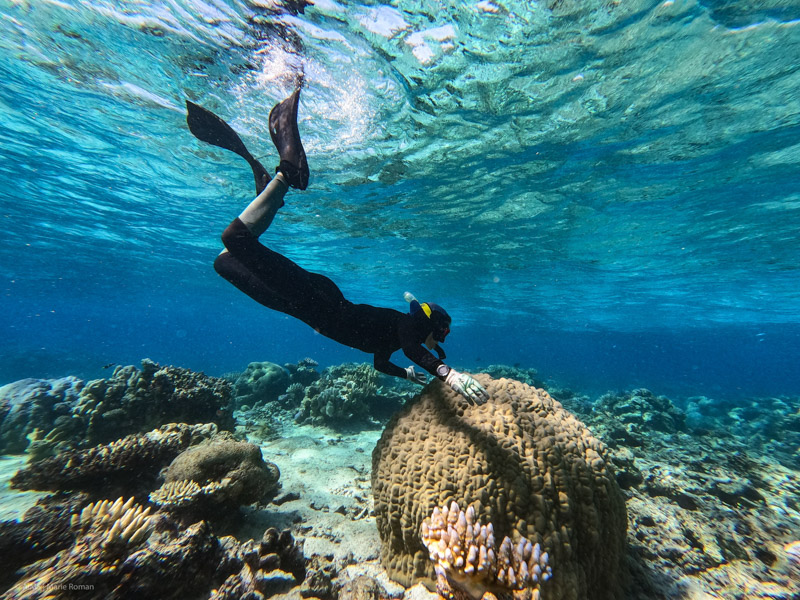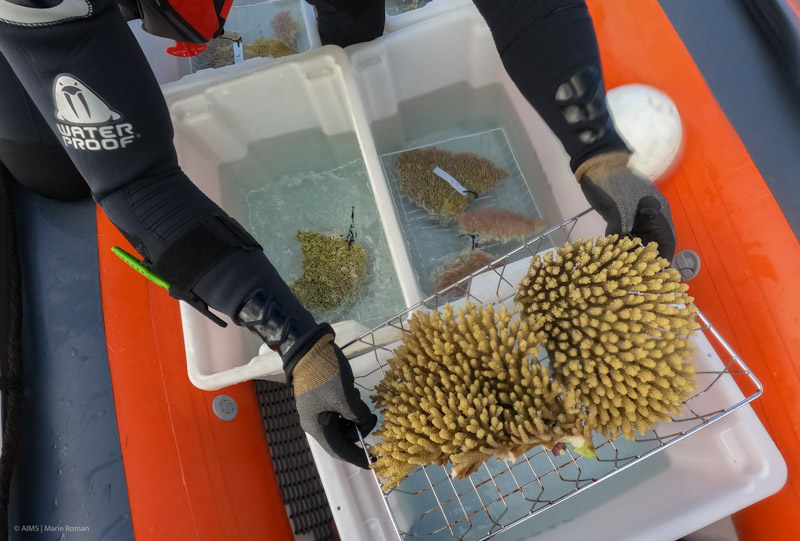Marine scientists have returned from a research expedition to the far northern Great Barrier Reef with potentially tough, heat-resilient coral that may help corals adapt to warming oceans.
The corals, ripe with eggs and sperm, have been carefully chosen to breed with coral from cooler reefs more than 800 km away. The hope is the parents will produce offspring more tolerant to warming temperatures.
The project, led by the Australian Institute of Marine Science (AIMS), is aligned with the Great Barrier Reef’s mass coral spawning event, which follows the upcoming full moon in November.
AIMS research scientist Dr Kate Quigley said the team used artificial intelligence and genetic analysis to locate reefs with a high likelihood of having heat tolerant corals.
“The far north of the Reef has corals that have survived some of the most devastating coral bleaching events,” she said.
“These corals have the potential to withstand higher temperatures than those from other reefs.
“We aim to harness this natural heat tolerance and facilitate its introduction to more vulnerable populations, so we can speed up the natural process of adaptation.
“This could help the Reef keep pace with rising temperatures, in hope of giving corals a fighting chance against future bleaching.”

In previous years, the AIMS team has successfully spawned and mixed five different coral species – including fast-growing branching and encrusting varieties. This work is based at the National Sea Simulator, the world’s most advanced research aquarium.
This year’s collection also includes the massive, slow-growing boulder corals (Porites), which is the sixth coral species the team will attempt to selectively breed.
“Working with Porites is challenging,” Dr Quigley said.
“It’s hard to identify them because of their small polyp sizes and determine who is male and who is female. Then we need to find a sufficient number of these colonies.
“Working with these species is essential to understand a reef’s ability to recover after disturbance, given their different ecological roles. For example, Porites is a very long-living coral that forms an important part of the physical structure of coral reefs.”

AIMS Principal Research Scientist Dr Line Bay said this research is part of the Australian Government’s Reef Restoration and Adaption Program (RRAP) – the biggest single effort anywhere in the world to help the Reef resist, adapt to, and recover from the impacts of climate change.
Dr Line Bay said scientists were investigating a suite of potential interventions this spawning season.
“Warming oceans are causing more frequent and severe bleaching events – we have witnessed three major bleaching events in the past five years, which is seriously testing the Reef’s resilience,” she said.
“To protect coral reefs, the world needs to reduce emissions, maintain good management of marine ecosystems and invest in cutting-edge marine science to help coral reefs adapt, recover and survive warming oceans.”
The AIMS project is part of the Reef Restoration and Adaptation Program, funded by the partnership between the Australian Government’s Reef Trust and the Great Barrier Reef Foundation.
Download media release | 170KB







